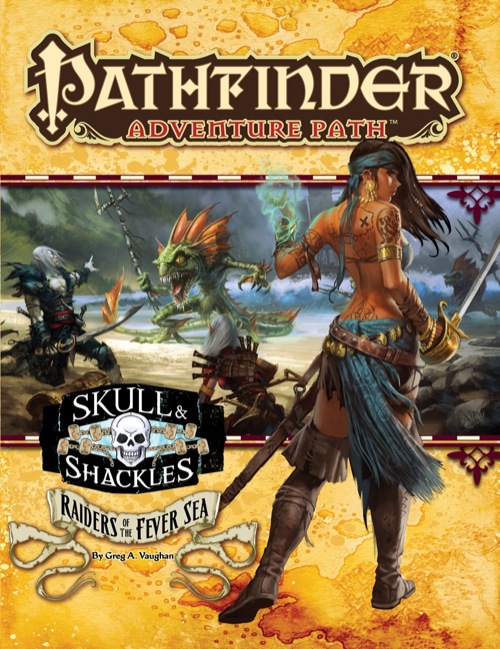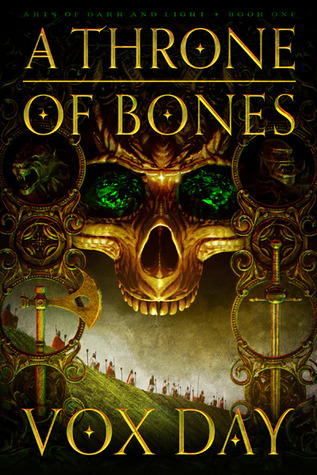- A well-loved professor, Alpon Lechfeld has died in what appears to be an accident—although there are some suspicious clues that cannot rule out foul play. For the sake of getting the game going, I'm going to tell the PCs that they've all been asked to be pallbearers and are named as (minor) heirs in his will. He'll give them a few things, but most of his fortune is left to his daughter Revecca.
- Ghosts are appearing in town, threatening (or at least frightening) many residents, that can be traced to a haunted and abandoned ruin of a former prison. Why are they leaving their normal territory? (linked to the murder above.)
- A rampaging Frankenstein-monster is blamed for some more townsfolk murders. This, and the ghosts, are probably happening at the same time, so nobody knows which is responsible.
- A mob of townsfolk wants to exhume Lechfeld and "put down his corpse"—of course, it turns out that someone has already exhumed him and dismembered his corpse, as well as apparently eaten some other recently dead in the graveyard. Notably, an amulet that he was buried with is missing. Revecca suggests that this amulet kept the ghosts in check in some way; if it's gone, that explains their extraordinary aggressiveness.
- The Frankenstein monster was a creation of Lechfeld himself in an extremely foolhardy experiment years ago, and it has come into town looking for him when he stopped visiting. It really is a monster, though, not some misunderstood something or other—he's killed numerous townsfolk viciously.
- The ghosts have to be put down (salt and burn their remains) in their haunted house.
- The professor's beautiful and friendly and otherwise hopefully quite sympathetic daughter, is missing. Gigantic wolf-paw prints and other hints of that nature surround the area she was last seen.
- Her kidnappers are, indeed, werewolves from the Bitterwood, and they've taken her to Innsburough.
- To follow up, the werewolves may have to be confronted in the Bitterwood, though. They're too good at covering their tracks to be followed to Innsborough.
- The Black Path has Revecca in their grasp, and want to sacrifice her on the Devil's Reef by Otto von Szell, the manorial lord of the Innsborough territory.
- Revecca knows enough about her father's amulet to use it as a key to enter the sealed tomb of Grozavest. This ability is related to its ability to suppress undead activity in some way. But Otto von Szell had his own ideas, and wanted to call up some undersea daemon (Typhon?) to destroy his rivals in the Black Path. Namely, Grigore Stefanescu.
- Stefanescu steals Revecca and her father's amulet, either from the PCs if they've rescued her, or from von Szell if for some reason they don't. Maybe it's a ghoul group that actually carries out the abduction? Ghouls from Dragomiresti seems like a good way to bring that into play.
- The ghouls take Revecca to Grozavest, where Stefanescu foolishly intends to "rescue" a Primogenitor sealed in with Melek Taus, thinking that by so doing, he will gain a champion capable of dealing with any of the other noble houses.
 Ideally, this would be interwoven and run concurrently with the ghost business from Part I. The Beast of the Ebenbach Road is more apt to attack travelers on the road between Mittermarkt and Ebenbach than to attack people in either location. It's a ravenous flesh golem, looking for its creator, and obviously not being able to find him, since his creator is Lechfeld himself, and he's dead.
Ideally, this would be interwoven and run concurrently with the ghost business from Part I. The Beast of the Ebenbach Road is more apt to attack travelers on the road between Mittermarkt and Ebenbach than to attack people in either location. It's a ravenous flesh golem, looking for its creator, and obviously not being able to find him, since his creator is Lechfeld himself, and he's dead.
What are flesh golems like in CULT OF UNDEATH (or DARK•HERITAGE for that matter?) For the real low-down, read "Herbert West: Reanimator" by Lovecraft; written as a deliberate parody or pastiche of Frankenstein. That's what we're going for here. (If you haven't ever read that before, you should, even if you don't care what I think about flesh golems. It's a pretty cool story. Funny that Lovecraft himself was never happy with it. He hated that he was required to write it in a serial format with a cliffhanger at the end of each installment, which was not his normal style.) In Mary Shelley, the golem was a sad, pitiable philosopher. In "Herbert West" they're savage monsters who would likely try to eat you if they noticed you.
The golem has attacked a few travelers on the road over the last few days, but now its breaking into homes or barns or something in Mittermarkt. People are dead, and their bodies gnawed on and partially eaten. The mob gets kicked up trying to figure out what's going on—or at least to find someone to blame and lynch.
Here's the golem stats, from the monster list:
GOLEM, FLESH: AC: 16 HD: 4d12 (28 hp) AT: slam +8 (2d6+4) STR: +8, DEX: -2 MND: -3 S: Immune to most forms of magical attack. Regular weapons do only half damage. Fire (magical or mundane) does 2x damage.
The stitched together remains of human(oids) given an evil unlife by foul magic. Flesh golems are notoriously tough and difficult to kill, although luckily they are very rare, and the research into the creation of one is usually punishable by death in most civilized lands.
The Beast, when put down, has fragments of notes on golem creation in its pockets—in Alpon Lechfeld's own hand, and prominently mentioning his name. And yeah; turns out he had a bit of a reputation as a macabre eccentric, prowling graveyards, and whatnot. While it had been seen as part of his research, he's now universally decried as a necromancer, and the cause of these attacks—both by the ghosts and by the Beast—and the mob wants to exhume him to (at the very least) make sure that he's really, truly dead. Maybe treat him like a vampire; behead him and stuff his mouth with garlic, or burn his body, or something.
There's a major clue when he's unearthed; his body has been dismembered, they find that other graves in the cemetery have also been raided (and partially eaten.) Most importantly, Revecca notes that an amulet that he was insistent in his will be buried with him is missing. Revecca knows something about this amulet, and suggests that it was the key that was holding back the haunts; now that it's missing, that's why they're all going crazy.
Of course, the PCs may insist that the body not be exhumed. They may take no interest in what the villagers do, on the other end of the spectrum. I'm always hesitant to have the next step of the adventure hinge on them finding some clue that they may not find, and may not even be interested in looking for. So, they don't have to. The townsfolk will probably eventually get around the PCs and dig up the body, and then rumors will reach their ears. The next phase is Revecca being kidnapped, and if they don't have any knowledge of the amulet, well they can still move forward without knowing that. They can find out about the amulet some other way. Heck; if the PCs don't do anything heroic, maybe someone else can; I think it'd be funny if a bunch of flat on their asses PCs are dinking about around town and another group of bounty hunters or adventurers show up with the amulet that they rescued from a pack of ghouls leaving town, and they're bringing it back as a gesture of good will.
This is the beauty of adventure planning by focusing on "what will the NPCs do, unless interrupted by the PCs?" It doesn't require the PCs to do anything if they don't really want to. But the world goes on without them doing it, or goes on while they're chasing after red herrings somewhere else, or while they're distracted by some other whatever. If they want to do that, they can. The NPCs just keep putting their plans in motion all the easier.
What are some other potential encounters or avenues that the PCs might chase down? They might try to track the amulet thieves, which as noted, are a pack of ghouls—probably 8-10 of them.
GHOUL: AC: 13 HD: 2d6 (8 hp) AT: claws or bite +2 (1d6) STR: +2, DEX: +0, MND: -1, S: touch paralyzes for 1d4 rounds, humans wounded by ghouls are cursed if they fail a MND + level check (DC 12) and will slowly turn into ghouls themselves. This process involves taking 1 point of MND damage every day (which does not heal overnight) until they reach -5, at which point the conversion is complete. GM may provide antidote/remedy to counter this curse.
Formerly humans, who fell prey to daemonic, cannibal rituals, and were transformed via blackest necromancy into feral, subhuman monsters that endure endless hunger for human(oid) flesh. Their most fearsome ability is their tendency to spread their curse to those who survive their attacks.
Ghouls are nasty opponents for lower level PCs. You might want to have a notion in your back pocket of how the PCs can find some way to deal with the ghoul curse if they follow up with this. Either that, or the survivors will have to ruthlessly put down their former comrades when they turn into ghouls themselves. Harsh.
If they're really harsh, they might end up fighting against the mob of townsfolk, although if they do that, they'll find that they've worn out their welcome very quickly, assuming that they don't get killed. Regular human civilians aren't tough, but when there's thirty of them, maybe a couple of old veterans, and they have big mean dogs too, they can be trouble to a party of low level PCs. And even if they kill and/or chase off the mob, then they'll have to deal with the sheriff and his deputies.
HUMAN, TOWNSFOLK: AC: 11 HD: 1d6 (4 hp) AT: weapon +0 (1d6), STR: +0, DEX: +0, MND: +0
HUMAN, VETERAN OR DEPUTY: AC: 12 HD: 1d10 (6 hp) AT: weapon +1 (1d6) STR: +2, DEX: +0, MND: +0
HUMAN, SHERIFF: AC: 14 HD: 3d6 (12 hp) AT: weapon +3 (1d6), STR: +2, DEX: +2, MND: +2
DOG: AC: 12 HD: 2d6 (8 hp) AT: bite +2 (1d6) STR: +2, DEX: +1, MND: -3
Anyway, there's also the possibility of some countryside exploration as they're looking around for clues. Like I said earlier, interweave all of these things with the ghost stuff I mentioned in Part I, and this can be a plenty busy few nights of role-playing.












